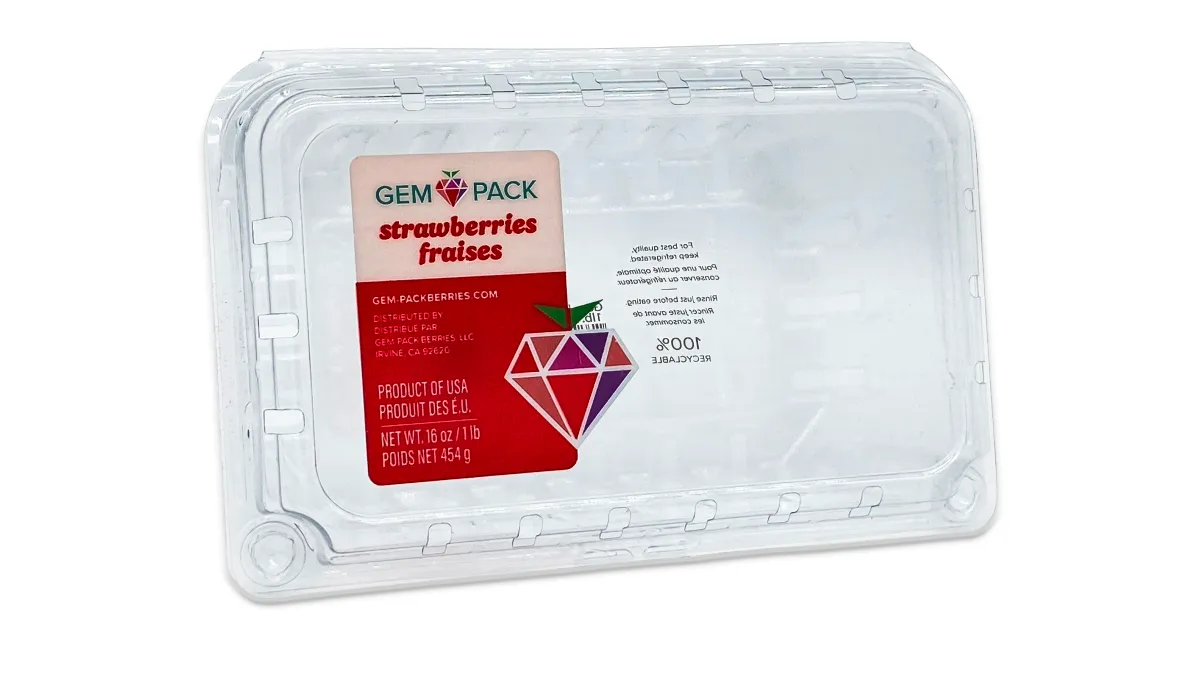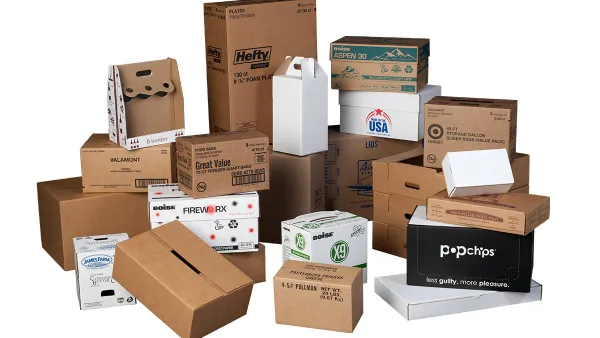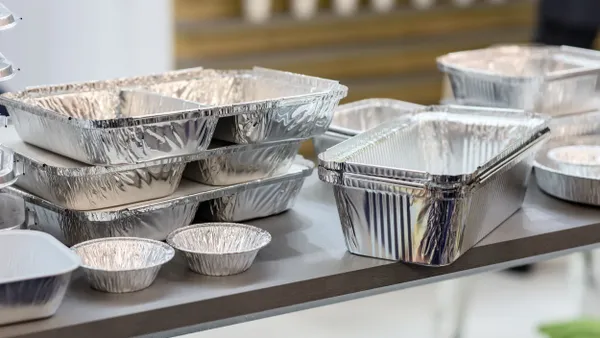Dive Brief:
- Gem-Pack Berries partnered with food packaging company Multisteps Industries to develop direct-to-packaging digital printing technology for PET clamshells. Gem-Pack is the first business in the United States to use this technology.
- This direct-to-packaging printing eliminates the need for conventional labels and adhesives. The companies say this reduces waste and enhances clamshell recyclability.
- California-based Gem-Pack will begin using the technology for a portion of its products in its home state beginning this quarter.
Dive Insight:
The companies have been working together to achieve this innovation for a couple years. Multisteps says it prioritizes design for recycling during product development.
“We are bringing to the market something that is quite revolutionary and contributes to a more sustainable packaging environment,” said Monica Steinberg, senior vice president of sales and business development at Multisteps. “Now you have a product, a clamshell, that can go into the recycling stream without having the need of separating plastic from paper.”
Multisteps already has tested and used this technology with some clients in international markets, such as Australia. As Multisteps makes its first foray into the U.S. market with this technology, the company will exclusively use the digital printing technology for Gem-Pack’s berry packaging for a set period of time. But the process can apply to other PET packaging as well, such as clamshells for tomatoes, grapes or stone fruits, Steinberg said.
“It's a fairly new technology, and we have been very conservative in how we are bringing the technology out and who we feel fits the best,” Steinberg said.
Although this type of printing uses food-grade washable inks that easily come off during the recycling process, thorough testing has proven that moisture won’t affect the inks prior to recycling, Steinberg said.
The process can also save customers money because they don’t have to purchase labels, she said. Plus, direct-to-packaging printing allows customers to use more of the packaging surface for messaging compared with a label’s limitations, she added.
This is the latest sustainability-enhancing packaging change for Gem-Pack, which earlier this year partnered with material supplier BADP to jointly develop a biodegradable plastic clamshell for berries. That project is progressing separately, and the company hasn’t yet had a chance to test Multisteps’ digital printing technology on that substrate. “We want to make sure we get everything right before we launch,” said Madu Etchandy, senior vice president of operations at Gem-Pack.
Although PET thermoforms, such as clamshells, are molecularly similar to PET bottles — the most recycled plastic packaging item — they are less commonly accepted in U.S. communities’ recycling programs. The National Association for PET Container Resources estimates that less than 60% of U.S. communities have access to curbside thermoform recycling, putting the material below the threshold used by the Federal Trade Commission to determine recyclability claims. But speakers at recent industry events discussed how acceptance is growing.
Most Gem-Pack labels already indicate that the packaging is recyclable, because “we use [biaxially oriented polypropylene] labels, which are recyclable,” Etchandy said. “This just takes it one step further, because we're eliminating the label and small part of our material use.”
Gem-Pack and Multisteps “are always bouncing fun ideas off of each other” and will continue to explore potential projects for this technology and others going forward, according to Etchandy.
“I'm excited to see how we take this technology and run with it. All of the ideas and possibilities are pretty much endless,” she said. “This is just the beginning.”















